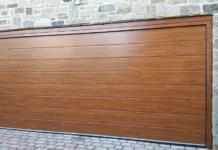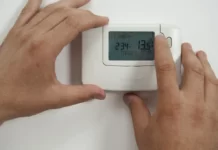Your plumbing system is one of the most important parts of your home. Every time you run the tap, have a shower, wash dishes and do laundry, you are relying on this system to do its job. Most of us use this system daily, without even thinking much about it. Because of its importance, it’s a good idea to do your part to keep your plumbing in good shape.
If not, it could begin to show signs of wear and stop working. Replacing plumbing that has been neglected or ignored can also be very expensive and take a lot of work.
With that in mind, here are some things you can do to keep your plumbing in good shape for as long as possible.
1. Get Your Plumbing Inspected
The first way to keep your plumbing in good shape is to get an annual inspection. Even if nothing seems out of the ordinary, consider getting your plumbing inspected. It is affordable, can be done in a few hours at most, and can ensure there are no problems developing behind the scenes that you need to worry about.
Choose a reputable company that you can trust, with experienced and licensed professionals. Many companies who do plumbing inspections can also help with any repairs you might have. This could be as simple as changing your toilet or adding a new faucet, to something more involved like a sewer line replacement. It is good to develop a relationship with a company who can trust who can be your go-to for plumbing issues.
2. Find Ways To Reduce Clogged Drains
Our drains are the unsung heroes of the plumbing systems in our home. They allow us to use and run a lot of water without making our homes a mess. Unfortunately, if you don’t think about and/or clean them, they can be problematic over time and lead to a lot of frustration.
Whether it be from soap scum, hair, food, or other debris, drains can get clogged and make it much slower (or even impossible) for water to drain. All in all, there are many common causes of clogged drains that you need to keep an eye out for.
To keep your plumbing system running smoothly, you should find ways to reduce the chances of your drains being clogged. This includes cleaning out the drain regularly, using a drain guard of some kind, and being careful about what you put down the drain.
3. Prepare for Winter
If you live in an environment where the temperatures dip below freezing, it is important to prepare your plumbing for winter. This includes insulating vulnerable pipes, turning off outdoor faucets, disconnecting hoses, and more. If you don’t do this, the pipes can freeze and potentially burst when the weather warms up. Not only can this make a massive mess in your home, it can be incredibly expensive to fix and rectify.
Water expands when it freezes, and this has the potential to destroy or severely damage your pipes. While pipes can always freeze, taking the steps to reduce the likelihood is always a good idea. Of course, once warmer temperatures come back, be sure to turn outdoor faucets back on again, to ensure you can use them effectively.
Ensuring Your Plumbing System Is Free From Issues
A damaged or broken plumbing system is never a fun thing to deal with. By getting regular inspections, preparing well for winter, and reducing the chances of clogged drains, you can make sure your plumbing system stays in good shape for years to come.














